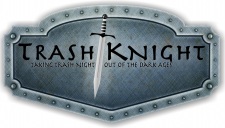Some products we use around our homes contain hazardous ingredients. These include many household cleaners, nail polish remover, motor oil, weed killer, hobby supplies, car batteries, household batteries, fluorescent bulbs, sharps, some electronics and bug sprays.

Hazardous waste in your home?
Can it harm you, your children, pets and the environment?
The answer is YES!
Many household products are made of chemicals that can harm us. If these items are used, stored or disposed of improperly, you, your pets or the environment can be injured.
Hazardous materials dumped on the ground or into the gutter can contaminate soil and the underground water supply — Fresno’s primary source of water. This page provides you with a guide for the disposal of hazardous products.
Household Hazardous Waste Drop-Off Events
To protect you, your family, pets and the environment, these products must be used carefully and disposed of properly. Please don’t put HHW products in the trash, on the ground, down the sewer or into the gutter. Save them for a household hazardous waste drop-off event.
The City of Fresno and Fresno County co-sponsor two household hazardous waste drop-off events each year, one in the spring and one in the fall. Dates are advertised in the Fresno Bee. To find out about the next event dates, call Fresno County, 262-4259 or Visit the Website.
(See our disposal guide below)
How can you tell if a product is hazardous ?
Check the label on the container for key words:

Things to keep in mind:
Purchase only what you need. Buy small amounts, check the label for the above key words and avoid purchasing hazardous products
Read and follow label directions carefully. When you must use a hazardous substance, apply only as directed and only as much as is needed.
Wear protective clothing such as safety glasses and gloves in well-ventilated areas.
Store hazardous products in the original containers, in a cool dry place, away from children, pets and food. Check for leaks. Do not mix products or store products together that may be incompatible. This may cause toxic themical reactions such as: explosions, fires, skin and eye irritations. Do not store hazardous products for more than one year from date of purchase.
Keep the number of the Poison Control Center visible and posted near the telephone in case of emergency. 1(800) 222-1222 You can also visit their website.
DISPOSAL GUIDE
Some important terms:
Explosive – Can catch fire, explode or give off dangerous fumes when exposed to water or air.
Reactive – Unstable chemicals that may react spontaneously with flammables, water, or other chemicals – may by explosive.
Poisonous / Toxic – May cause injury or death when inhaled (breathing), ingested (eating or drinking), or absorbed through the skin (touching).
Corrosive – Can “eat through” clothes, metal, etc. and severely burn skin.
Flammable – Can catch on fire.
All items listed (except weapons) can be taken to a Household Hazardous Waste Event. For information and dates call 262-4259 or visit the Fresno County Website regarding these events.
All starred (*) items can be dried out outside, away from kids and pets, then placed in the gray trash container.
These items are Corrosive & Toxic – Do Not Mix with Other Substances
- Ammonia-based products
- Bathroom/Kitchen cleaners
- Bleach
- Car Wax (solvents)
- Chlorine cleaners
- Disinfectant
- Drain Openers
- Glass cleaners
- Pool Chemicals
- Oven cleaners
These items are Explosive – Take to the Police or Sheriff’s Department
These items are Flammable
- Aerosol sprays
- Disinfecting sprays
- Deodorant sprays
- Hairspray
These items are Flammable, Corrosive & Toxic
- Asphalt
- Driveway Sealants
- Roofing Tar*
- Rug & Upholstery Cleaner*
- Rust Remover*
- Thinners
These items are Flammable & Toxic
- Cleaner/Degreaser
- Copper Polish*
- Diesel Fuel
- Enamel
- Floor polish*
- Furniture polish*
- Gasoline
- Kerosene
- Motor Oil
- Nail Polish Remover*
- Oil-Based Paint
- Shoe polish*
- Silver polish*
- Spot Remover*
- Stains
- Solvents
- Stripper
- Transmission Fluid
- Turpentine
- Varnishes
- Wood Preservatives
These items are Toxic
- Abrasives
- Antifreeze
- Artist/Model Paint* (leftover paint must be taken to HHW event but a completely empty, dried out container can be placed in the blue cart)
- Batteries(radios, toys, etc)
- Car Batteries
- Fertilizer
- Fluorescent Bulbs
- Fungicides
- Herbicides
- Insecticides
- Medicine
- Mercury (please click here for more information)
- Mothballs
- Latex Paint* (leftover paint should be soaked up with kitty litter and placed in the gray cart but the empty, dried out container can be placed in the blue cart)
- Oil Based Paint (leftover paint must be taken to HHW event but a completely empty, dried out container can be placed in the blue cart)
- Pharmaceuticals
- Scouring Powder
- Water-Based Paint* (leftover paint should be soaked up with kitty litter and placed in the gray cart but the empty, dried out container can be placed in the blue cart)
- Weed Killer





 An animal can experience a fatal blockage if he swallows packaging material while attempting to eat the residue off of it?
An animal can experience a fatal blockage if he swallows packaging material while attempting to eat the residue off of it? An animal’s head can get stuck inside certain plastic and glass containers causing suffocation or overheating? In particular, certain yogurt containers that are narrower at the top and wider at the bottom are especially dangerous for animals.
An animal’s head can get stuck inside certain plastic and glass containers causing suffocation or overheating? In particular, certain yogurt containers that are narrower at the top and wider at the bottom are especially dangerous for animals.












